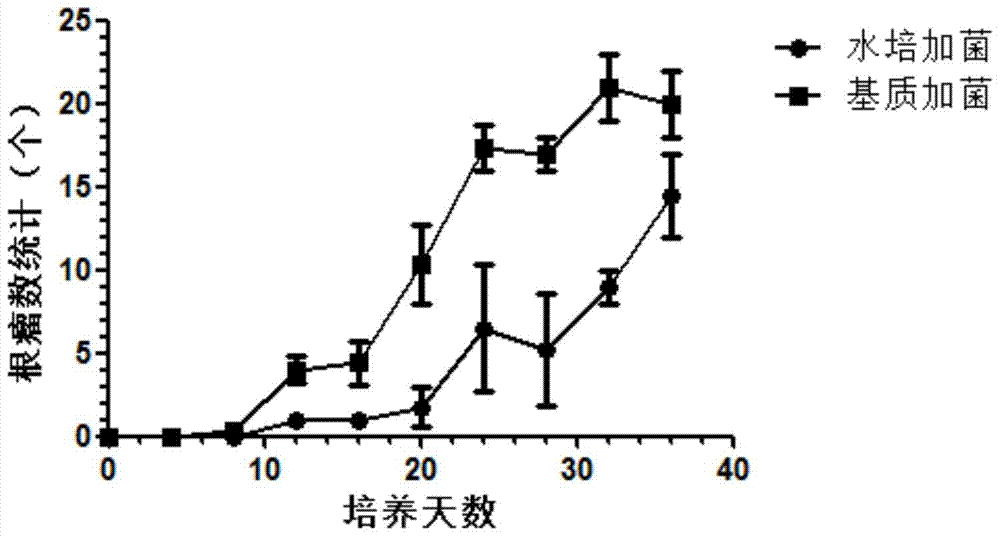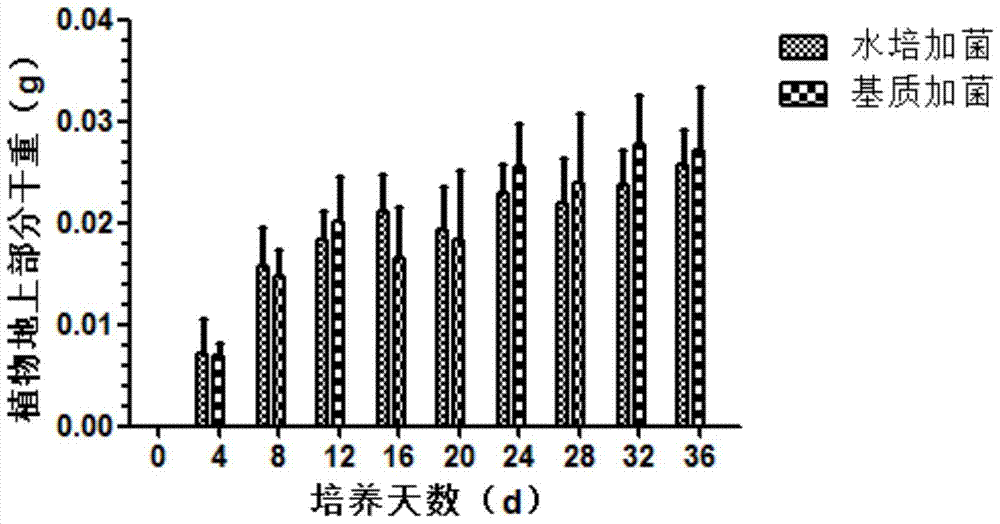Application of Vermiculite and Perlite as Substrate for the Symbiotic Culture of Rhizobia and Robinia pseudoacacia
A technology of symbiotic culture and rhizobia, which is applied in the field of plant cultivation, can solve the problems of rapid changes in nutrient solution, poor root environment stability, and external microbial contamination, so as to improve the ability of symbiotic nitrogen fixation, shorten the cultivation period, and improve the growth environment. Effect
- Summary
- Abstract
- Description
- Claims
- Application Information
AI Technical Summary
Problems solved by technology
Method used
Image
Examples
preparation example Construction
[0027] The preparation quantity of six kinds of cultivation groups of table 1
[0028]
[0029] Note: Among them, the plant group is to implant the germinated black locust in the matrix bag, and the plant adding bacteria group is to implant the germinated black locust in the matrix bag and add 1ml rhizobia solution to the root
[0030] (5) Detection content: the earliest time of plant nodulation, the number of root nodules; the dry weight of the aboveground part of the plant; the gradient dilution plate technique is used to detect the changes of bacteria and fungi in different symbiotic culture techniques.
[0031] According to the processing data of the present invention, it can be concluded that the ground dry weight of Robinia pseudoacacia in the matrix bag culture technique is significantly higher than that of the hydroponics technique, and nodules are formed earlier than the hydroponics technique, and root nodules were observed on the 8th day of inoculation, and the roo...
Embodiment 1
[0035] 1 Material:
[0036] 1.1 Test matrix: vermiculite and perlite were purchased from Xinfang Reagent Company, the particle size of vermiculite was 1.0-3.0mm; the particle size of perlite was 1.5-2.5mm.
[0037] 1.2 Matrix bag and test tube: polyethylene bag, size and specification 24cm×12cm, volume about 1500cm 3 . The diameter of the test tube mouth is about 5cm, and the height is about 20cm.
[0038] 1.3 Leguminous plants tested: Robinia pseudoacacia, seeds purchased from Yangling.
[0039] 1.4 Test strain: Mesorhizobium amorphae CCNWGS0186.
[0040] 1.5 The medium formula used is as follows:
[0041] YMA medium: mannitol 10g / L, yeast powder 3g / L, K 2 HPO 4 0.5g / L, MgSO 4 ·7H 2 O0.2g / L, NaCl0.1g / L, agar powder 20g / L;
[0042] Liquid TY medium: tryptone 5g / L, yeast powder 3g / L, CaCl 2 2H 2 O 0.7g / L;
[0043] Solid TY medium: tryptone 5g / L, yeast powder 3g / L, CaCl 2 2H 2 O 0.7g / L, agar powder 20g / L;
[0044] Water agar medium: add 1g agar powder per 100mL di...
PUM
| Property | Measurement | Unit |
|---|---|---|
| diameter | aaaaa | aaaaa |
| particle diameter | aaaaa | aaaaa |
| particle diameter | aaaaa | aaaaa |
Abstract
Description
Claims
Application Information
 Login to View More
Login to View More - R&D
- Intellectual Property
- Life Sciences
- Materials
- Tech Scout
- Unparalleled Data Quality
- Higher Quality Content
- 60% Fewer Hallucinations
Browse by: Latest US Patents, China's latest patents, Technical Efficacy Thesaurus, Application Domain, Technology Topic, Popular Technical Reports.
© 2025 PatSnap. All rights reserved.Legal|Privacy policy|Modern Slavery Act Transparency Statement|Sitemap|About US| Contact US: help@patsnap.com



